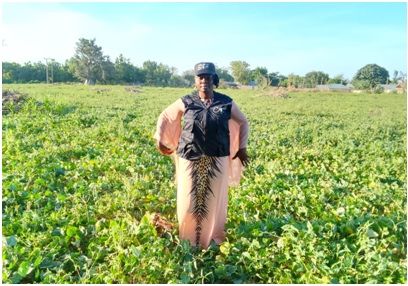Uncover the crucial role that crop diversity plays in cultivating resilient and sustainable farms. Explore the multifaceted benefits that diverse crops bring to the table, from mitigating risks to fostering ecological balance.

"In the fields of resilience, every seed sown is an investment in a better, more sustainable future. Let's cultivate a world where farming doesn't just sustain us but sustains the planet.-" Oprah Winfrey
Recognition that climate change could have negative consequences for agricultural production has generated a desire to build resilience into agricultural systems. One rational and cost-effective method may be the implementation of increased agricultural crop diversification. Crop diversification can improve resilience in a variety of ways: by engendering a greater ability to suppress pest outbreaks and dampen pathogen transmission, which may worsen under future climate scenarios, as well as by buffering crop production from the effects of greater climate variability and extreme events. Such benefits point toward the obvious value of adopting crop diversification to improve resilience, yet adoption has been slow. Economic incentives encouraging production of a select few crops, the push for biotechnology strategies and the belief that monocultures are more productive than diversified systems have been hindrances in promoting this strategy.
Cozance is known for implementing crop diversity in various forms, at a variety of scales, allowing farmers to choose a strategy that both increases resilience and provide economic benefits.
1. Diversification for Risk Mitigation
Planting a variety of crops helps farmers mitigate risks associated with pests, diseases, and adverse weather conditions. Explore real-world examples where diversified farms have demonstrated greater resilience in the face of challenges.
2. Enhancing Soil Health
Delve into the ways in which different crops contribute to soil health. Highlight the concept of crop rotation and how it improves soil fertility, reduces erosion, and minimizes the need for synthetic fertilizers.
3. Ecological Harmony
Explore the symbiotic relationships that diverse crops can have with each other and beneficial insects. Discuss how planting diverse crops can create a more balanced and resilient ecosystem, reducing the need for chemical interventions.
4. Adapting to Climate Variability
Examine how crop diversity aids in adapting to changing climatic conditions. Discuss the importance of selecting crops that are well-suited to the local climate and how diversified farms are better equipped to handle temperature fluctuations and extreme weather events.
5. Preserving Crop Genetic Diversity
Discuss the significance of maintaining a rich gene pool in crops for future agricultural resilience. Explore the role of heirloom and traditional varieties in preserving genetic diversity and adapting to evolving environmental conditions.
6. Culinary and Nutritional Diversity
Highlight the benefits of diverse crops for human health and nutrition. Discuss how a variety of crops in the diet ensures a broad spectrum of essential nutrients and contributes to food security.
7. Economic Resilience for Farmers
Explore the economic advantages of crop diversity for farmers. Discuss how diversified farms can have more stable incomes, as they are less vulnerable to market fluctuations affecting a single crop.
8. Community Impact
Investigate how diverse farming practices positively impact local communities. Discuss community-supported agriculture (CSA) models and the social benefits of diverse farms, including increased employment opportunities and community resilience.
9. Challenges and Solutions
Acknowledge potential challenges associated with adopting diverse cropping systems, such as increased management complexity. Discuss practical solutions and best practices for farmers looking to transition to more diversified farming practices.
10. Looking Ahead: Future Trends in Crop Diversity
Conclude by exploring emerging trends in crop diversity and how technology, innovation, and collaborative efforts are shaping the future of resilient and diverse farming practices.
"Just like in the gym, resilience in farming requires hard work, dedication, and a commitment to growth. Let's lift up our communities by sowing the seeds of change’’
This Article aims to inspire a deeper appreciation for the intricate web of benefits that crop diversity weaves within the fabric of agriculture, creating not only resilient farms but also a sustainable and harmonious relationship with the environment.
